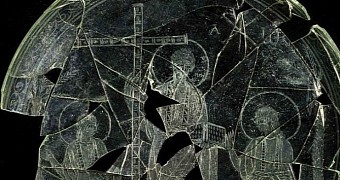Researchers exploring an archaeological site in the town of Linares in present-day Spain claim to have discovered a 4th-century plate depicting a Jesus that looks nothing like the one shown in later biblical imagery.
The glass plate in question, a photo of which is available next to this article, was broken down into several bits and pieces at the time archaeologists came across it, information shared with the public says.
Now that it's been put back together almost in its entirety, researchers say that, unlike other religious artifacts, it shows a Jesus that not only does not have a beard, but that also has oddly short hair.
A rare image of Christ
Specialists who have had the chance to examine this glass plate suggest that, seeing how it dates back to the 4th century, it need be labeled as one of the earliest images of Jesus to have until now been documented, New York Daily News informs.
Apart from the fact that he has no beard and a rather peculiar coiffure, the Jesus depicted on this plate appears to have curly hair. What's more, he seems to be wearing what archaeologists describe as a philosopher's toga.
This is yet to be confirmed, but researchers have reasons to believe that the two men shown flanking Christ in this image are two of his apostles. All things considered, chances are that these apostles are Peter and Paul.
As easily noticeable, all the three men depicted on this ancient glass plate unearthed in the town of Linares in Spain have a halo hovering over their head. The figures are not painted on the plate, but engraved.
Those familiar with Christianity are well aware of the fact that, in this day and age, Jesus is more often than not shown as having long, brown hair and a beard. In fact, this image of Christ has been the norm for several centuries now.
Hence, it should not come as a surprise that archaeologists were quite stunned to find this 4th-century depiction of a beardless Jesus sporting short, curly hair.
What purposes did the plate serve?
The archaeologists behind this find maintain that, according to evidence at hand, this plate was not just a decorative object. On the contrary, they suspect that it once served to hold bread that was offered to people during various religious ceremonies.
For the time being, the exact origin of this religious artifact remains a mystery. Specialists hope that, as they continue to explore the archaeological site where it was discovered, they will gain a better insight into its history and functions.

 14 DAY TRIAL //
14 DAY TRIAL //